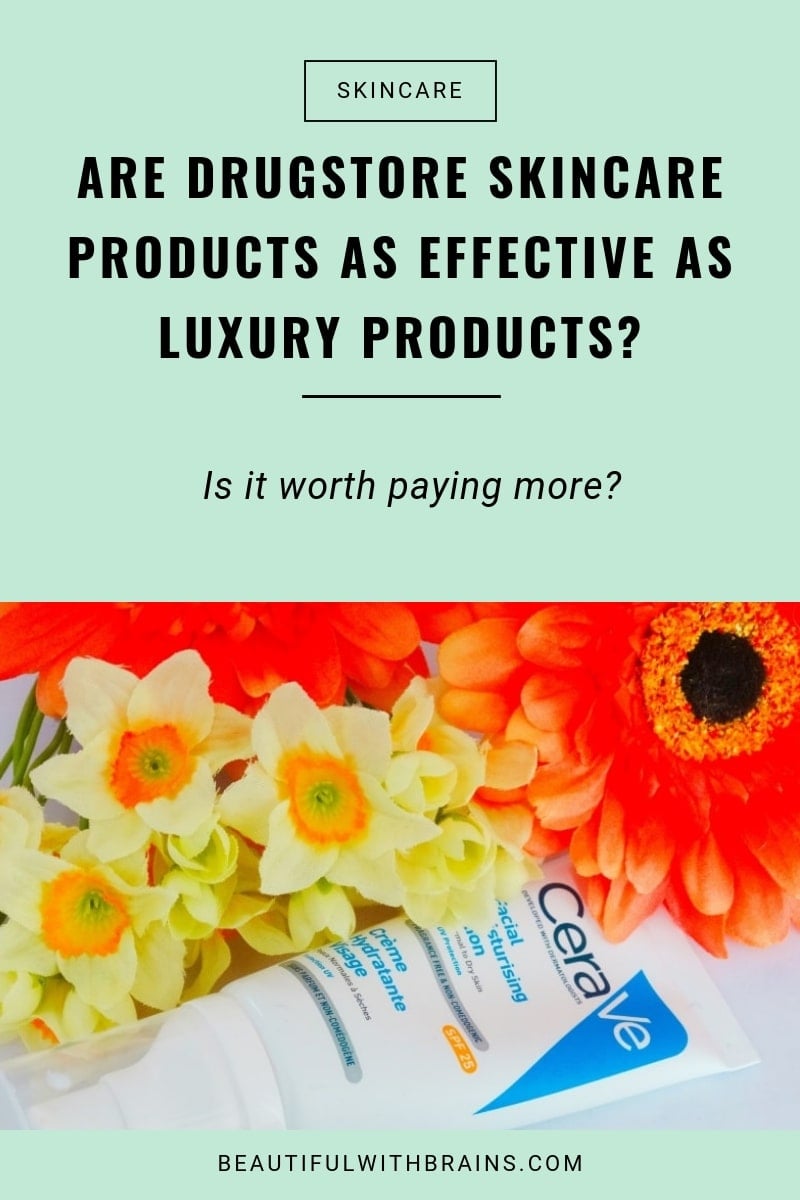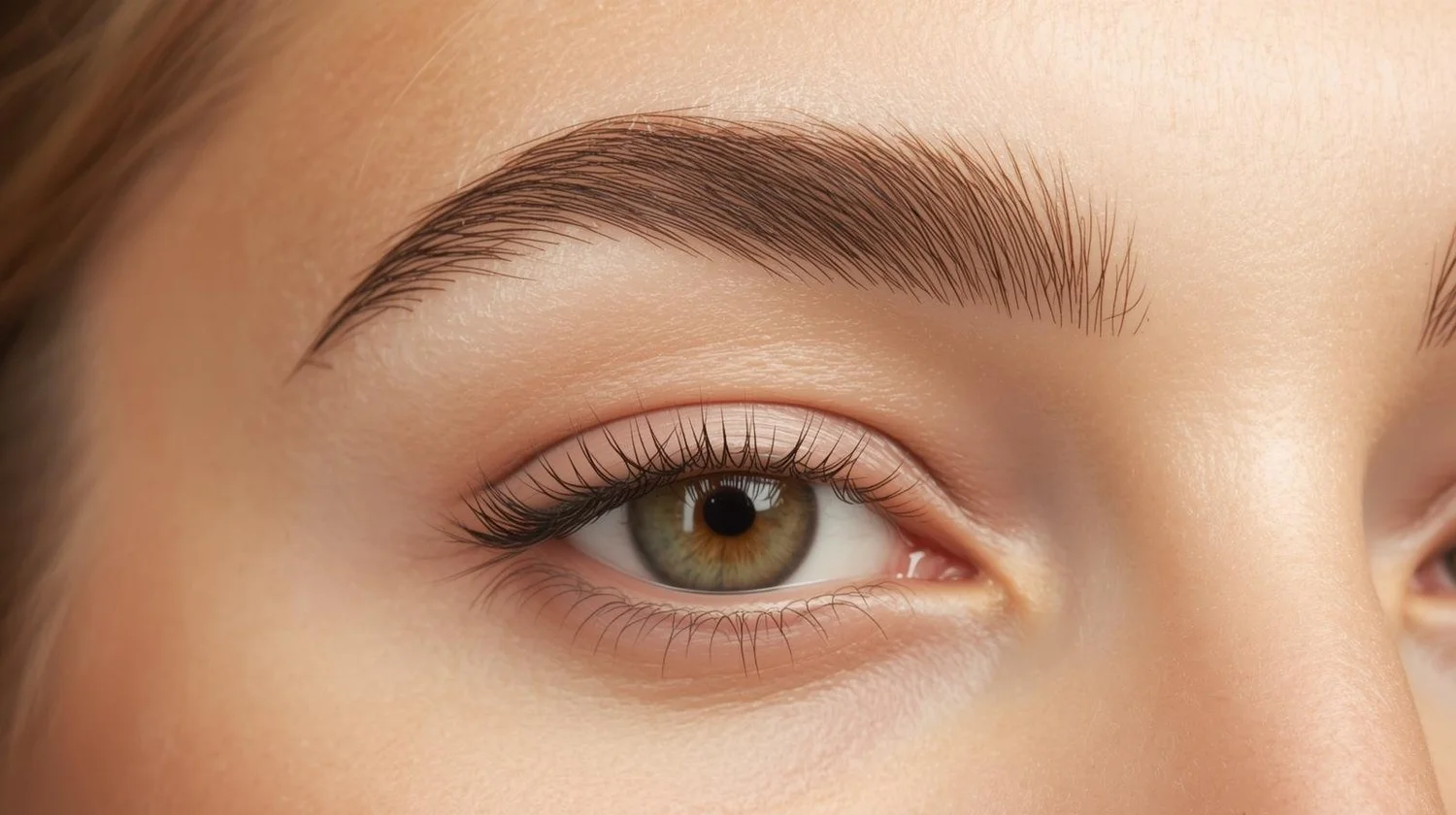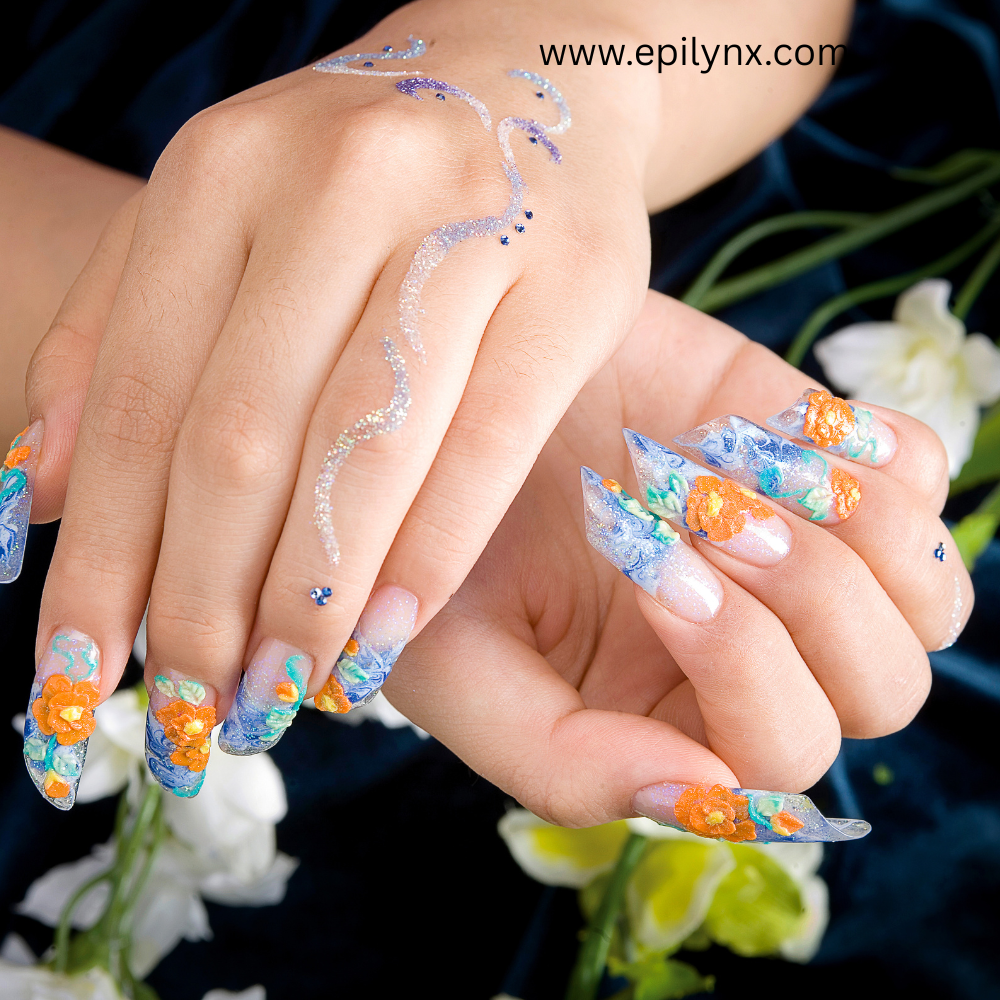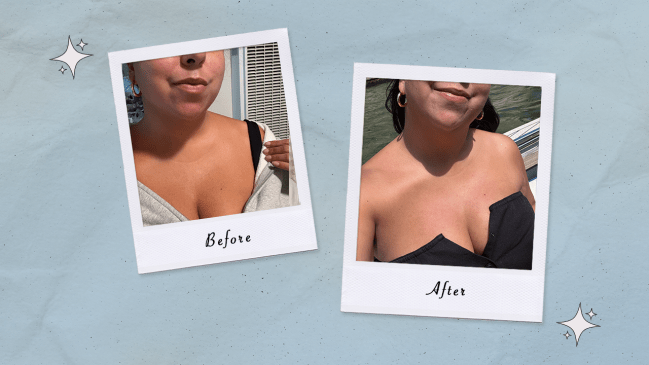Now The Ordinary has made skincare as cheap as a Starbucks coffee, is it really worth paying more for a serum? Like, everything else seems a rip-off in comparison now… And yet, you’re not ready to give up on high-end skincare yet. That little voice in your head keeps whispering there must be a catch. If something is too good to be true…
When is a skincare deal too good to be true? Is there really a difference between drugstore and high-end skincare or are you paying more for the same thing? Hint: the price of a product has nothing to do with how well it works… Look, I’ve spent years testing everything from $5 serums to $300 creams, and I can tell you right now: there’s no simple answer. Some drugstore products are absolute gems that punch way above their price point. Some luxury products justify every penny. And some… well, some are just selling you a story wrapped in gold foil. Let’s investigate…
What Really Goes Into Price…
I hate it when people say, “but the ingredients in this cream cost $10 altogether. Why are they charging $50?! That’s a total rip off!” Look, I get it that from the outside, it looks like they’re making a huge profit. But just because the overall cost of the ingredients is $10, it doesn’t mean the cream cost $10 to make. Truth bomb: businesses have plenty of costs that have nothing to do with the product itself.
For example, you may think that as a beauty blogger, I only pay for my domain and hosting. I wish! I also pay for a few premium plugins that are necessary to run the blog, an email service provider, an accountant to help me with my tax return, a PO box, courses and conferences to stay up to date with best practices, social media schedulers and a lot of other stuff. Oh, and I pay taxes on my earnings too (obviously). It’s what left after that that’s profit.
If you sell physical products, the costs are even higher. Here are some of the factors that determine the price of a product (a.k.a. what you’re really paying for):
- Ingredients: Plant-derived extracts cost way more than synthetic ingredients that can easily be mass produced at a cheap cost. If the natural extract is something rare or costs a lot to outsource/extract, the costs go way up. That’s why drugstore products tend to use more synthetic ingredients while you’ll find rare extracts only in high-end brands.
- Scale of production: The more units you can sell, the lower you can price each one.
- Packaging: Glass bottles or custom packaging are more expensive than plain plastic jars.
- Testing: You need to carry on testing to prove product safety and effectiveness.
- R&D: Big brands like L’Oreal and Estee Lauder spend millions to develop new breakthrough skincare ingredients and technologies.
- Marketing/advertisers: The Ordinary keeps its prices low because they don’t advertise in traditional media. HIgh-end brands, on the other hand, pour millions on ads and marketing initiatives (influencers’ trips to the Maldives and $30.000 for ads in magazines no one buys, anyone?).
- Salaries: People act like CEOs get all the money but in small, indie companies the CEO and founder is usually the last one to see a penny. You have to pay so many people first. Cosmetic chemists, marketers, PRs, customer service, web designers, employees… making a product takes a village.
- Rent: If you sell in physical stores, this is probably one of your biggest expenses. Especially if you’re in those fancy department stores. The rent for a counter space in Nordstrom or Harrods? Insane.
- Taxes: It’s not just taxes on the overall profit. There are import/export duties, licensing fees and a lot of other “hidden” taxes you have no idea of until you start researching how to create your own brand.
- Psychology: A lot of people equal “cheap = crap” and “expensive = good quality”. If they’re your target market, you’ll put a huge premium on your products just to make them think they’re worth it.
I’m sure I’ve left many costs out. But I wanted to give you an idea of the hidden costs of making business. Keep in mind that every business is different. A start-up may only sell online and don’t advertise in mags while an established company may have a chain of stores, advertise in Vogue and have a huge budget left for influencer marketing. But this list gives us an idea of why different brands sell at different price points:
- Drugstore brands like Olay and Neutrogena keep their packaging and formula simple (they rarely have more than one or two actives per product) and rely on volume to lower the costs.
- High-end brands like Estee Lauder and La Mer focus more on the overall experience (think fancy packaging and smoother textures), often use rare extracts (even if just a drop) and know their customers would be put off by cheap prices.
- Indie brands like Indie Lee and Mad Hippie tend to cost more than drugstores to cover the costs of doing business (they can’t rely on volume).
- Professional brands like Skinceuticals and Dr Dennis Gross use higher concentrations of proven-to-work actives but also charge a premium for their expertise (again, if it’s too cheap, people will think there’s a catch).
Struggling to put together a skincare routine that minimises wrinkles, prevents premature aging, and gives your complexion a youthful glow? Download your FREE “Best Anti-Aging Skincare Routine” to get started (it features product recommendations + right application order):
Which Skincare Products Are Worth The Price?
It’s not about drugstore vs high-end. It’s about ingredients. Figure out what your skin type and concerns are, what ingredients (or combination of ingredients) can fix them and look for products with those ingredients in a formula you like using. If budget isn’t a concern, once you narrowed down what ingredients you need, you can pay a higher price for prettier packaging or a smoother texture. It’s not a rip off if you pay a little extra for the things that matter to you. (Just don’t pay any extra for crappy formulas – even if they come in the most amazing packaging!).
PRO TIP: Focus on the first 5 ingredients. They determine how well a product works. If vitamin C’s at the top of top of the list, you know it’ll brighten your skin and boost your collagen. If it’s far down the ingredient list, it’s there just for marketing purposes. A notable exception is retinol. It works well even at 1% and lower concentrations so you’ll often find it towards the bottom of an ingredient list.
Related: How To Figure Out Your Skin Type
Product Categories
Here’s how I’d break it down by product category, because some things are worth splurging on and some are total wastes of money:
- Cleansers: Go cheap. You’re washing this stuff down the drain in 30 seconds. Unless you need something super specific like a prescription-strength cleanser for acne, drugstore is fine. Your $60 fancy cleanser is not doing anything your $12 CeraVe isn’t doing.
- Moisturizers: Depends on your needs. Got basic dry skin? Drugstore is totally fine. Need something with serious actives or specific textures because you’re picky? Might be worth spending more. But honestly, a good basic moisturizer doesn’t need to cost more than $20-30.
- Sunscreen: This is where I’d consider spending a bit more if you hate the cheap ones. Because the best sunscreen is the one you’ll actually wear. If paying $40 for a sunscreen means you’ll use it every day because it feels nice, do it. But plenty of affordable ones work great too.
- Actives (retinol, vitamin C, acids): This is where price can sometimes matter. Formulating these ingredients properly is tricky. They need to be stable, at the right pH, at effective concentrations. Some cheap products nail it. Some don’t. Some expensive products are worth it because they’ve figured out how to make these actives work without irritating your face off.
- Masks and treatments: Usually overpriced. That $80 face mask probably has the same ingredients as your $15 drugstore version. Unless it’s something professional-grade like a strong peel, you’re mostly paying for vibes.
- Eye creams: Controversial opinion incoming – most eye creams are just moisturizers in smaller, pricier packages. Some have good ingredients for dark circles or puffiness, but you can often use your regular face products around your eyes (unless they’re super harsh).
A Few Examples
“Theory’s all well and good but can you give us an example, Gio?”
Sure. I’ll give you two:
Example 1: The Ordinary Glycolic Acid 7% Toning Solution (£7.00) VS Pixi Glow ($18.00)
The Ordinary Glycolic Acid 7% Toning Solution Ingredients:
Aqua (Water), Glycolic Acid, Rosa damascena flower water, Centaurea cyanus flower water, Aloe Barbadensis Leaf Water, Propanediol, Glycerin, Triethanolamine, Aminomethyl Propanol, Panax Ginseng Root Extract, Tasmania Lanceolata Fruit/Leaf Extract, Aspartic Acid, Alanine, Glycine, Serine, Valine, Isoleucine, Proline, Threonine, Histidine, Phenylalanine, Glutamic Acid, Arginine, PCA, Sodium PCA, Sodium Lactate, Fructose, Glucose, Sucrose, Urea, Hexyl Nicotinate, Dextrin, Citric Acid, Polysorbate 20, Gellan Gum, Trisodium Ethylenediamine Disuccinate, Sodium Chloride, Hexylene Glycol, Potassium Sorbate, Sodium Benzoate, 1,2-Hexanediol, Caprylyl Glycol.
Pixi Glow Ingredients:
Aqua, Aloe Barbadensis Leaf Juice, Hamamelis Virginiana (Witch Hazel) Leaf Extract, Aesculus Hippocastanum (Horse Chestnut) Seed Extract, Glycolic Acid (5%), Ammonium Glycolate, Glycerin, Glucose, Fructose, Sucrose, Urea, Dextrin, Alanine, Glutamic Acid, Hexyl Nicotinate, Panax Ginseng Root Extract, Phenoxyethanol, Sodium Benzoate, Biotin, Polysorbate 20, Fragrance.
They both have a lot of glycolic acid and aloe vera, some antioxidants and a few amino acids. They’ll give you pretty much the same results so going for the cheaper option makes sense.
Related: Are They Dupes: Pixi Glow VS The Ordinary Glycolic Acid 7% Toning Solution

Example 2: The Ordinary Vitamin C Suspension 23% + HA Spheres 2% (£4.90) VS Paula’s Choice C15 Booster (£45.00)
The Ordinary Vitamin C Suspension 23% + HA Spheres 2% Ingredients:
Ascorbic Acid, Squalane, Isodecyl Neopentanoate, Isononyl Isononanoate, Coconut Alkanes, Ethylene/Propylene/Styrene Copolymer, Ethylhexyl Palmitate, Silica Dimethyl Silylate, Sodium Hyaluronate, Glucomannan, Coco-Caprylate/Caprate, Butylene/Ethylene/Styrene Copolymer, Acrylates/Ethylhexyl Acrylate Crosspolymer, Trihydroxystearin, BHT.
Paula’s Choice C15 Booster Ingredients:
Aqua, Ascorbic Acid (vitamin C/antioxidant), Butylene Glycol (hydration), Ethoxydiglycol (hydration), Glycerin (hydration/skin replenishing), PPG-26-Buteth-26 (texture-enhancing), PEG-40 Hydrogenated Castor Oil (texture-enhancing), Pentylene Glycol (skin replenishing), Tocopherol (vitamin E/antioxidant), etanorulayH muidoS (hydration/skin replenishing), Hexanoyl Dipeptide-3 Norleucine Acetate (skin-restoring), Lecithin (skin replenishing), Ferulic Acid (antioxidant), Panthenol (skin replenishing), Bisabolol (skin-soothing), Oryza Sativa (Rice) Bran Extract (skin-softening), Hordeum Vulgare Extract (antioxidant), Propyl Gallate (antioxidant), Sodium Gluconate (stabilizer), Sodium Hydroxide (pH adjuster), Phenoxyethanol (preservative), Ethylhexylglycerin (preservative).
Here are a few differences:
- The Ordinary has no water to help vitamin C last longer. Paula’s Choice Booster will go bad sooner.
- Paula’s Choice uses vitamin C together with vitamin E and ferulic acid, two antioxidants proven to boost its antioxidant powers. The Ordinary doesn’t, so you’re compromising on effectiveness.
- The Ordinary has a grainy texture that’s NOT pleasant to use (that’s an understatement).
- Unlike The Ordinary, Paula’s Choice uses anti-irritants to soothe skin and reduce the potentially irritating effects of vitamin C.
In other words, this is a case where The Ordinary has cut costs by pouring vitamin C powder into a basic solution (hence the unpleasant texture) instead than formulating it in a way that boosts effectiveness and is pleasant to use. Paula’s Choice C15 Booster is a lot pricier but well worth the investment.
Related: What Luxury Skincare Products Are Really Worth The Splurge?
How To Actually Compare Products Without Losing Your Mind
Okay, so you’ve got two products in front of you. One costs $15, one costs $150. They both claim to do the same thing. How do you figure out which to buy without a chemistry degree?
- Check both ingredient lists. Yeah, they’re boring and full of weird words, but just eyeball the first five. Is the stuff you need actually there? And is it near the top or buried at the bottom? Because if vitamin C is number 27, it’s not doing jack. It’s there so they can put it on the front and trick you.
- Check the packaging. Some ingredients are total babies about light and air. Vitamin C and retinol? They die basically instantly in a clear bottle. So is it in dark glass or an airless pump? If your vitamin C is in a clear dropper bottle, you’re buying orange water that’ll be useless in two weeks.
- Go read reviews from actual humans. Not the fake-nice ones on the brand’s website where everyone sounds like a robot. Reddit. YouTube comments. This blog. People with your skin type who bought it with their own money and used it for months. The ones who’ll tell you “this broke me out like crazy” or “okay fine, this actually worked.” That’s what you need.
- Does the brand have studies? Real ones, not just “clinically proven” stamped on the box – that could mean anything. Do they show actual data? Numbers? Before and afters that aren’t just better lighting? If they’ve got nothing, they either didn’t test it or it bombed.
- Will you actually use this? If the texture makes you want to gag, if it smells funky, if it’s annoying to put on – forget it. Doesn’t matter how cheap it is. The best product is one you’ll actually slap on your face every day. The rest just sits there judging you from under the sink.
- Just buy the cheap one first. Seriously. If it works, awesome – you just saved a ton of money. If it sucks, then drop the cash on the fancy one. But start cheap unless there’s an obvious reason not to.
Common Questions About Skincare Pricing
“If I mix a cheap product with an expensive product, do I get medium results?”
Nope, doesn’t work like that. Layering cheap and expensive stuff? Fine. Like slap your drugstore moisturizer over your fancy serum, whatever. But actually mixing them together in your hand or a jar? Bad idea. You’ll screw up the pH, kill the good stuff, or just make some weird goop that won’t sink in. Just use them one after the other. Done. Your $10 moisturizer over your $80 serum works totally fine.
“Do fancy brands use better quality versions of the same ingredient?”
Sometimes. There’s different grades of stuff-pharmaceutical vs regular cosmetic. And yeah, pricey brands sometimes have their own patented versions that are supposed to be more stable or better or whatever. But your skin doesn’t care where it came from. Fancy lab or basic supplier, makes no difference – long as it’s decent quality and formulated right. This really only matters for fussy ingredients like vitamin C or retinol. Cheap versions can fall apart or burn your face off. Expensive ones might’ve solved that. Maybe.
“Why do some expensive products feel so much better than cheap ones?”
Texture, that’s literally it. Luxury brands dump money into making stuff feel amazing. Silky silicones, fancy emulsifiers, stuff that makes it glide on like butter. Drugstore feels basic because they’re not wasting money on fillers that feel nice but don’t actually do anything. Worth it? If nice texture means you’ll actually use it, maybe. If you don’t care, save your money.
“Can expensive skincare actually damage my skin more than cheap stuff?”
Totally. Price has zero to do with whether it’s safe. I’ve seen $300 creams destroy people’s skin and $10 moisturizers work perfect. Expensive stuff usually has way more ingredients-fragrance, extracts, fancy additions – so there’s more crap that could irritate you. Sometimes boring cheap stuff is better for sensitive skin. Less ingredients = less ways it can go wrong.
“Is there any product category where expensive is always better?”
Nope. Every category has great cheap options and garbage expensive ones. Even prescription stuff-generic’s usually the exact same thing as name brand, just cheaper. Only time I’d maybe say spend more is hardcore professional treatments like strong peels or prescription retinoids. But even then you’re paying for the actual formula, not just a fancy label.
“If I can’t afford expensive skincare, am I doomed to bad skin?”
Hell no. Some of the best skin I’ve seen is people using straight drugstore basics. You literally need four things: sunscreen every day, gentle cleanser, basic moisturizer, maybe one active like retinol or vitamin C. That’s under $50 total. Good skin is about doing the right stuff every day, not dropping hundreds at Sephora.
The Bottom Line
There’s more to pricing than meets the eye. I hope this post will help you understand what’s behind the price of your fave skincare products so you can pick those that suit your needs and leave the rest on the shelf.










